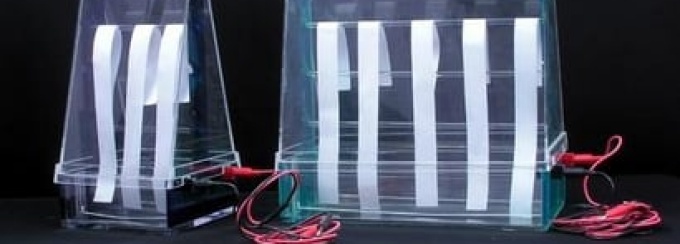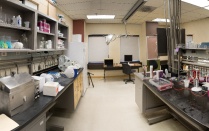IN THE NEWS
Patrick Ravines

Project Electrophoresis
Explorations with paper and gel electrophoresis: can we move media, make art and move/remove media and unwanted stains/blemishes from existing art and cultural heritage with electrophoresis? What alterations are historical documents/papers undergoing? The idea is to investigate electrophoretic methods to generate art and to conserve art via the manipulation of controlled diffusion/migration of charged colorants-ionic and polar compounds- and other media within and on the matrix of paper or other support materials. An interesting aspect of this project is that the technology of electrophoresis is directly linked to ideas of truth and accountability such as in DNA fingerprinting, and it will be used to alter, modify, and transmogrify archival documents (personal and not from existing collections) that contain personal, ownership and historical information related to truth and societal order resembling the information yielded via electrophoresis.
Patrick Ravines
Patrick Ravines became the director of Buffalo State’s Patricia H and Richard E. Garman Art Conservation Department in July 2010. He is the fourth director of the art conservation program since its founding in 1970. Patrick has experience as a conservator, researcher, and administrator. Before joining Buffalo State, he served as senior project conservator and research fellow at the George Eastman House International Museum of Photography and Film, now George Eastman Museum in Rochester, New York. He was an Andrew W. Mellon Fellow in the Advanced Residency Program in Photograph Conservation (2005 - 2007) at the Eastman House, and, for more than a decade, chief of the Conservation Office, Bahá’í World Centre, Haifa, Israel. He holds advanced degrees in chemistry, library science, and library and archives conservation.
His areas of interest are in 19th century photographic chemistry, physics, and material science to understand and better preserve photographic collections; characterization of water-soluble polymers and their use in art, craft, and food industry; surface metrology applied to the wide range of objects found in cultural heritage and art; and in biological art/media and the long-term preservation issues, and applying the tools and technologies of the life sciences to conservation treatment.

